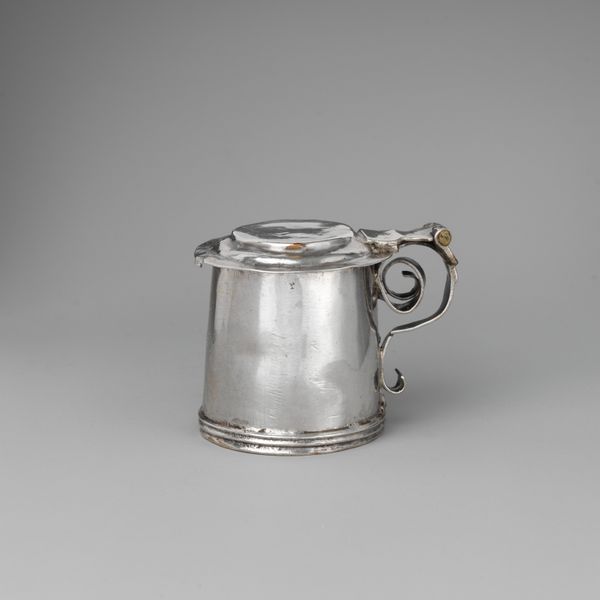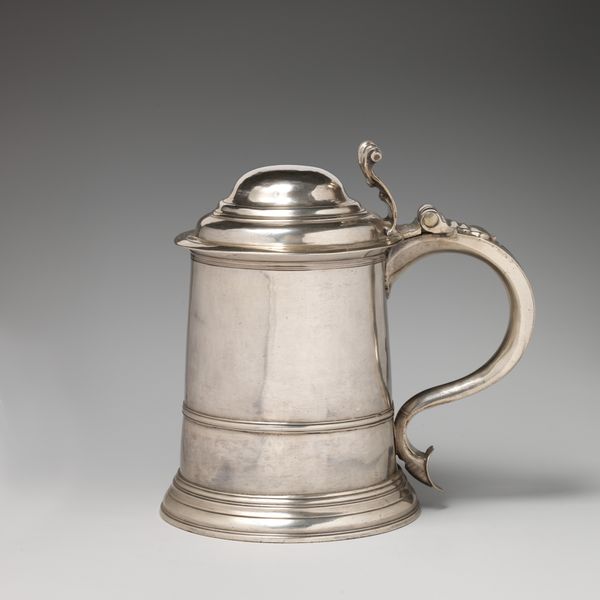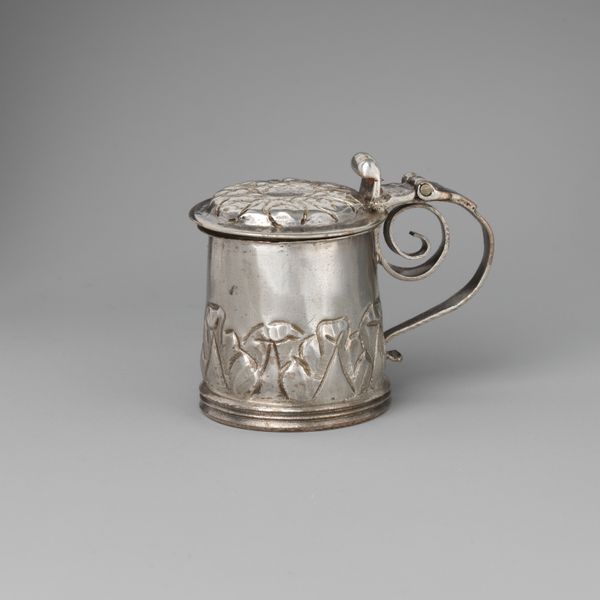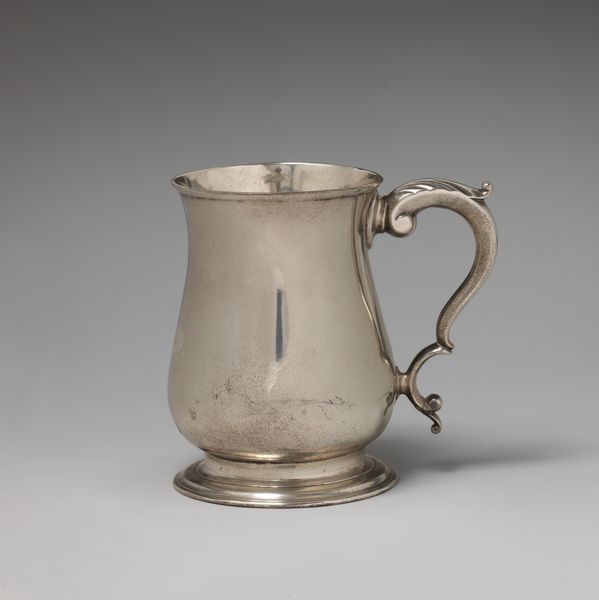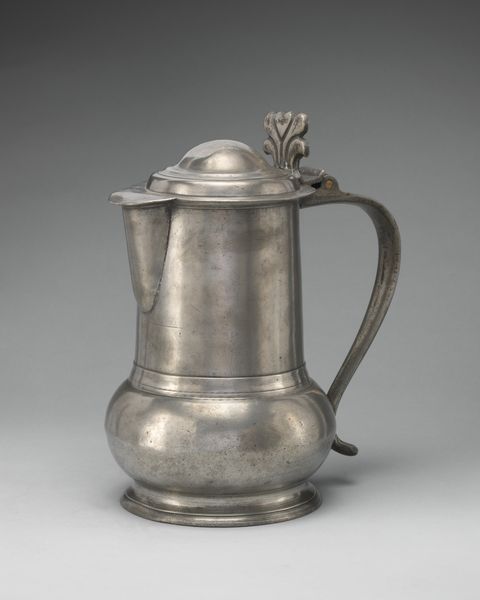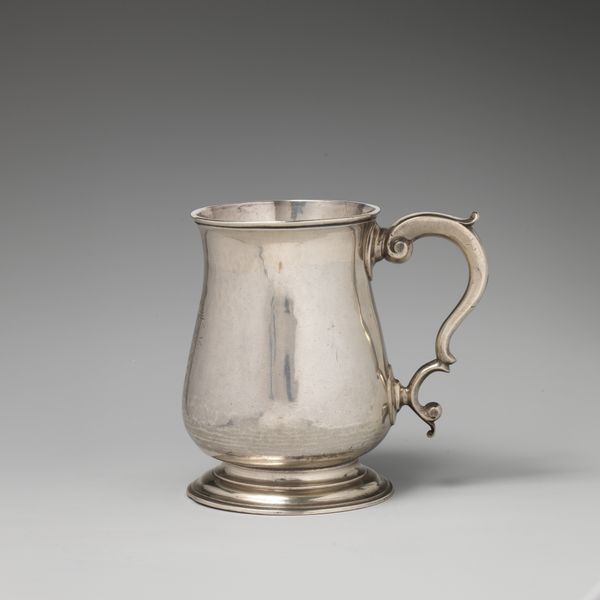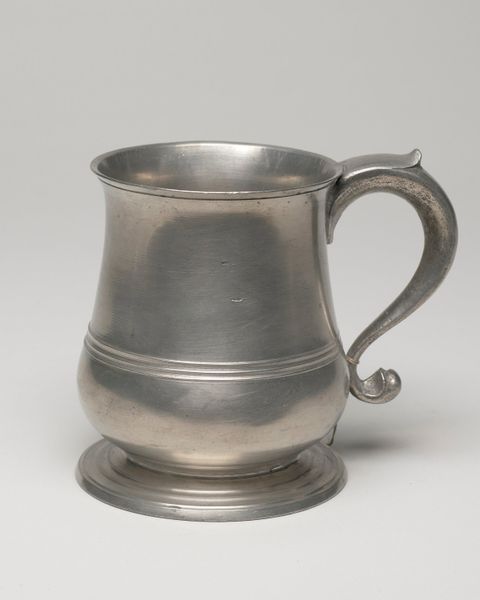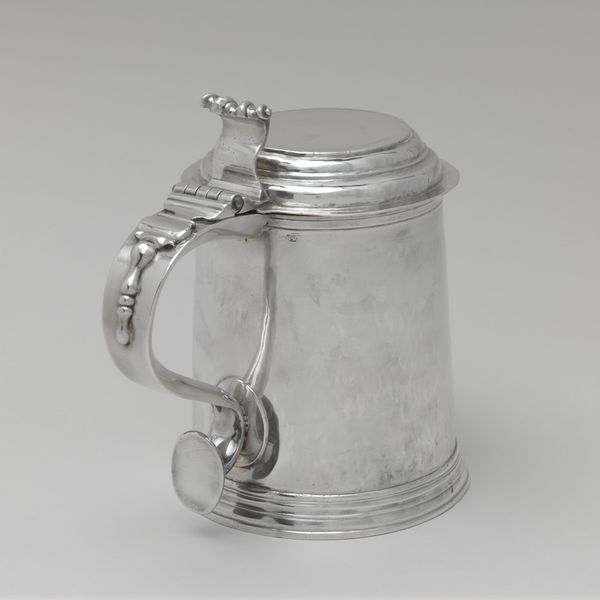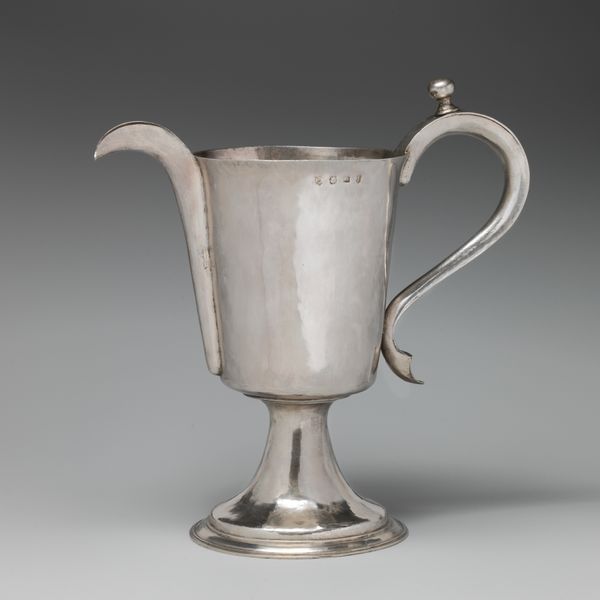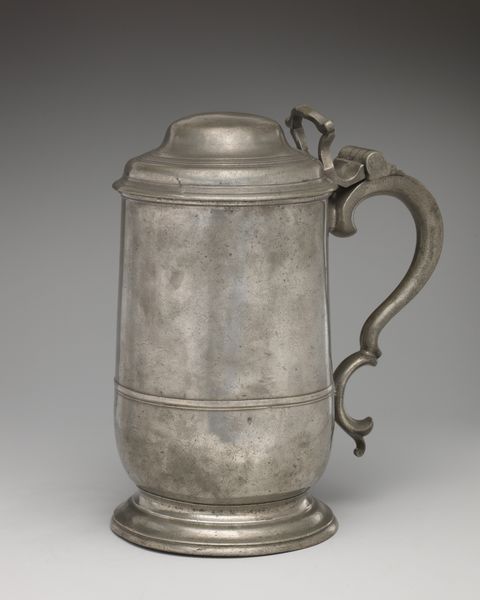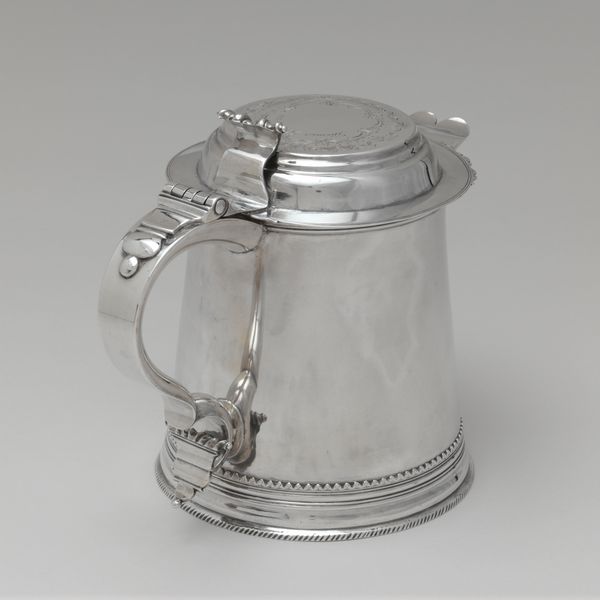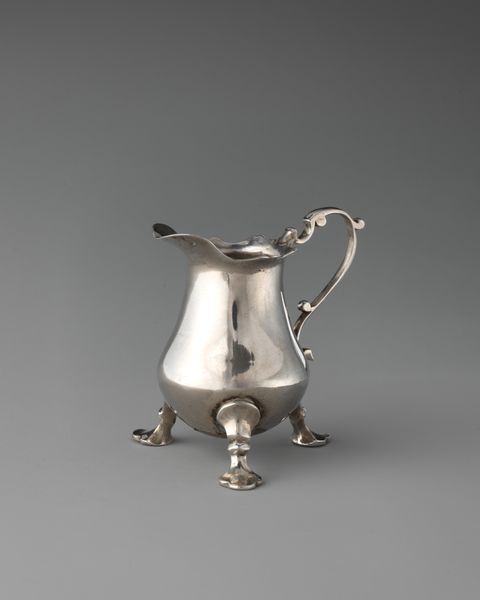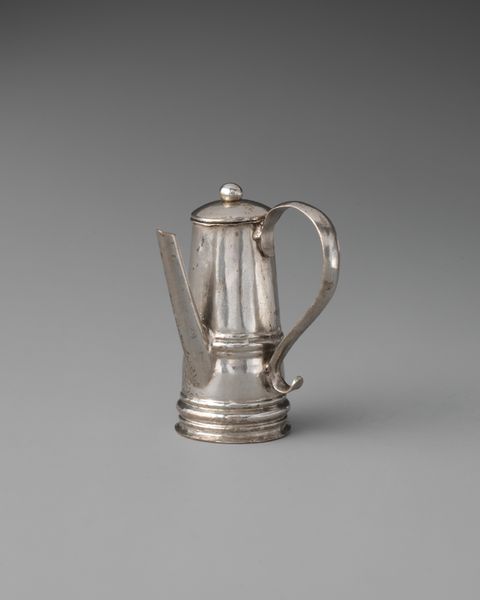
silver, sculpture
#
silver
#
baroque
#
sculpture
#
decorative-art
Dimensions: Overall: 1 3/4 × 1 in. (4.4 × 2.5 cm)
Copyright: Public Domain
Curator: At first glance, this little tankard seems quite utilitarian, but don’t let the initial impression fool you. We are looking at a miniature silver tankard, an example of decorative art made around 1707–1708. Editor: It's so petite! It’s making me feel like a giant. There's an aura of nostalgia here, or perhaps an anticipation of small joys. Curator: Miniature objects, especially during the Baroque period, often served purposes beyond simple utility. They were about craftsmanship, status, and, indeed, play. Silver objects were clear indicators of wealth and refined taste. Editor: The visual texture is so appealing. All those parallel lines running horizontally on the lower section contrasted with the quatrefoil band towards the top. There’s a definite tension between restraint and subtle ornamentation. I can also imagine the reflective dance of light on the silver's surface. Was silver often chosen to symbolize something specific? Curator: Silver carries layers of significance across cultures. Beyond wealth, it has been linked to the moon and, thus, the feminine, intuition, and the subconscious. Alchemically, silver is tied to purity and transformation. The tankard, in this light, is less about ostentation and more about inner wealth. It hints at something concealed, a treasure one might discover in oneself, especially when drinking alone. Editor: It's curious how this drinking vessel has acquired such resonance, far transcending its utilitarian purpose. What’s more, these tiny objects feel almost alive to me. Almost as if there is a narrative hiding inside the curves and facets of the piece. The miniature size suggests the world of dollhouses and imagined realities, stories and intimate uses. Curator: It makes one think of scale. This small tankard can lead to great thoughts. Editor: Precisely.
Comments
No comments
Be the first to comment and join the conversation on the ultimate creative platform.
